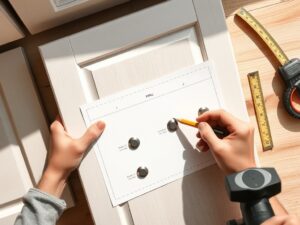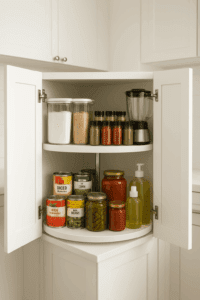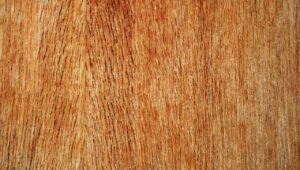Table of Contents
- Overview
- Materials & Tools Required
- Cabinet Dimensions
- Cut List
- Step-by-Step Assembly
- Wiring Diagram
- Finishing & Customization
- Troubleshooting
Overview
This blueprint will guide you through building a classic upright arcade cabinet suitable for MAME systems, Raspberry Pi setups, or original arcade boards. The design is based on traditional 1980s arcade proportions and can accommodate a 19-24 inch monitor.
Finished Dimensions:
- Height: 72 inches (183 cm)
- Width: 26 inches (66 cm)
- Depth: 32 inches (81 cm)
Skill Level: Intermediate Build Time: 15-25 hours Estimated Cost: $300-500 USD
Materials & Tools Required
Materials
- 3/4″ (19mm) MDF or Plywood: 3 sheets (4′ x 8′)
- 1/2″ (12mm) MDF: 1 sheet for internal bracing
- 2″ x 2″ Wood strips: 8 feet for internal frame
- Piano hinge: 26 inches for coin door access
- Wood screws: 1.25″, 2″, and 3″ lengths
- Wood glue
- T-molding: 50 feet (optional, for professional edge finish)
- Sandpaper: 120, 220, 320 grit
- Primer and paint or laminate covering
Tools Required
- Circular saw or table saw
- Jigsaw
- Router (for T-molding groove)
- Drill with bits
- Pocket hole jig (recommended)
- Measuring tape
- Square
- Clamps
- Safety equipment
Cabinet Dimensions
Front View
|<------ 26" ------>|
┌─────────────────────┐ ← 72" total height
│ MARQUEE AREA │
│ 6" │
├─────────────────────┤
│ │
│ MONITOR │
│ AREA │ ← 24" height
│ 20" │
│ │
├─────────────────────┤
│ CONTROL PANEL │ ← 4" height
├─────────────────────┤
│ │
│ CABINET │
│ BODY │ ← 38" height
│ │
│ │
└─────────────────────┘
Side Profile
32" depth
|<------------------------->|
┌─────┐
│ M │ ← Monitor bezel
│ O │ 15° angle
│ N │
└──┬──┘
│ ← Control panel
│ 15° angle
┌──┴────────────────────────┐
│ │
│ MAIN BODY │
│ │
│ │
└──────────────────────────┘
Cut List
Main Cabinet Pieces (3/4″ MDF/Plywood)
- Sides (2 pieces):
- Custom shape – see template below
- Height: 72″, Width: 32″ at base, 20″ at top
- Back Panel: 26″ x 72″
- Bottom: 26″ x 30.5″
- Top/Marquee area: 26″ x 18″
- Monitor Shelf: 24″ x 18″
- Control Panel Surface: 26″ x 12″
- Control Panel Front: 26″ x 4″
- Coin Door Panel: 26″ x 12″
- Speaker Grille Area: 24″ x 8″
Internal Bracing (1/2″ MDF)
- Monitor Mounting Bracket: 22″ x 16″
- Internal Shelves (2): 24″ x 18″
- Cable Management Panel: 24″ x 12″
Support Strips (2″x2″ wood)
- Horizontal supports (4): 22″ each
- Vertical supports (2): 18″ each
Step-by-Step Assembly
Phase 1: Side Panel Preparation
- Create Side Panel Template
- Transfer the measurements to create a template
- The sides taper from 32″ at bottom to 20″ at top
- Include 15° angle cuts for monitor and control panel areas
- Cut Side Panels
- Use template to mark both side panels
- Cut with circular saw, finish edges with jigsaw
- Sand smooth with 120-grit sandpaper
Phase 2: Main Structure Assembly
- Prepare Bottom and Back
- Cut bottom panel with 45° beveled edges for clean joints
- Pre-drill pilot holes to prevent splitting
- Attach Bottom to Sides
- Apply wood glue to joint surfaces
- Secure with 3″ wood screws every 6 inches
- Use clamps to ensure square assembly
- Install Back Panel
- Position back panel flush with rear edges
- Secure with 2″ screws every 8 inches around perimeter
Phase 3: Internal Framework
- Install Horizontal Supports
- Mount 2×2 strips inside cabinet at:
- Monitor shelf level (48″ from bottom)
- Control panel level (38″ from bottom)
- Internal shelf levels as needed
- Mount 2×2 strips inside cabinet at:
- Add Monitor Shelf
- Position at 15° angle for optimal viewing
- Support with brackets cut from 1/2″ MDF
- Ensure 24″ width fits your monitor
Phase 4: Control Panel Assembly
- Create Control Panel
- Cut main surface with 15° bevel on front edge
- Route holes for joysticks and buttons (customize layout)
- Standard spacing: 7″ between joysticks, 1.25″ button spacing
- Attach Control Panel
- Hinge at back for easy access to wiring
- Install piano hinge for full-width support
Phase 5: Front Assembly
- Install Coin Door Area
- Cut opening for coin mechanism
- Install hinged panel for easy access
- Add T-molding groove if using edge banding
- Create Marquee Area
- Frame opening for backlit marquee
- Install fluorescent fixture or LED strips
- Add removable panel for artwork changes
Wiring Diagram
Basic Electrical Layout
POWER SUPPLY (ATX or Arcade)
├── Monitor Power
├── Audio Amplifier
├── LED Lighting (Marquee)
└── Computer/Game Board
CONTROL WIRING
├── Player 1 Controls
│ ├── Joystick (4-way or 8-way)
│ ├── 6-8 Action Buttons
│ └── Start Button
├── Player 2 Controls (same as P1)
├── Coin Inputs (optional)
└── Admin Buttons (Exit, Pause, etc.)
Recommended Wire Gauges
- Power lines: 16 AWG
- Control signals: 22 AWG
- Audio: Shielded cable
- Video: Coax or HDMI
Finishing & Customization
Surface Preparation
- Fill any gaps with wood filler
- Sand entire cabinet: 120 → 220 → 320 grit
- Remove all dust with tack cloth
Finishing Options
Option 1: Paint Finish
- Prime with high-quality primer
- Apply 2-3 coats of furniture-grade paint
- Wet sand between coats with 400 grit
Option 2: Laminate/Vinyl
- Apply contact cement evenly
- Use J-roller for bubble-free application
- Trim with sharp utility knife
Option 3: T-Molding Edge
- Route 3/32″ slot around all visible edges
- Insert T-molding with rubber mallet
- Creates professional arcade look
Artwork Application
- Marquee: Printed on translucent material
- Side Art: Vinyl decals or painted stencils
- Control Panel: Laminated print or direct application
Troubleshooting
Common Issues & Solutions
Cabinet rocks or feels unstable:
- Check all joints are tight
- Add internal corner braces
- Ensure bottom is level and flat
Monitor doesn’t fit properly:
- Verify monitor dimensions before cutting
- Adjust mounting brackets as needed
- Consider different monitor if necessary
Control panel feels flimsy:
- Add additional support brackets underneath
- Use thicker material (1″ instead of 3/4″)
- Install crossbar support
Doors don’t align:
- Check cabinet is square during assembly
- Adjust hinge placement
- Use shims if necessary
Customization Ideas
Size Variations
- Bartop version: Remove lower cabinet, mount on existing surface
- Cocktail table: Horizontal orientation with glass top
- Mini cabinet: Scale down 25% for desktop use
Modern Upgrades
- LED strip lighting: Programmable RGB effects
- Wireless controls: Bluetooth joystick/button systems
- Multiple monitors: Side-by-side or upper/lower configurations
- Built-in speakers: Upgrade audio with quality drivers
Theme Variations
- Japanese candy cab style: Curved edges, different proportions
- Modern gaming: Clean lines, RGB lighting
- Retro restoration: Match specific manufacturer styles
Safety Notes
⚠️ Important Safety Reminders:
- Always wear safety glasses when cutting or routing
- Use dust masks when sanding MDF
- Ensure proper ventilation in work area
- Double-check electrical connections before powering on
- Use GFCI outlets for all power tools
Final Assembly Checklist
- [ ] All joints secure and square
- [ ] Monitor properly mounted and angled
- [ ] Control panel responsive and comfortable
- [ ] Coin door accessible and functional
- [ ] Marquee lighting operational
- [ ] All wiring organized and secured
- [ ] Cabinet level and stable
- [ ] Surface finish complete and cured
- [ ] Artwork applied and protected
- [ ] Final testing of all systems
Congratulations! You’ve built your own arcade cabinet. Enjoy countless hours of retro gaming!
For questions, modifications, or sharing your build photos, visit our community forum.
This blueprint is provided free for personal use. Please respect copyright when using commercial artwork or game ROMs.game ROMs.
This article contains affiliate links, which means we may earn a small commission at no extra cost to you if you click through and make a purchase.


